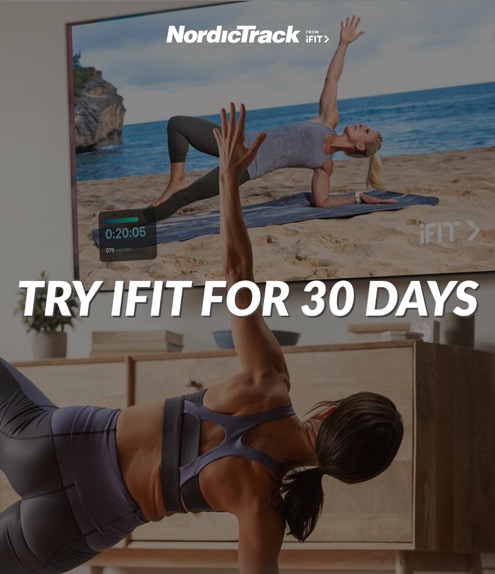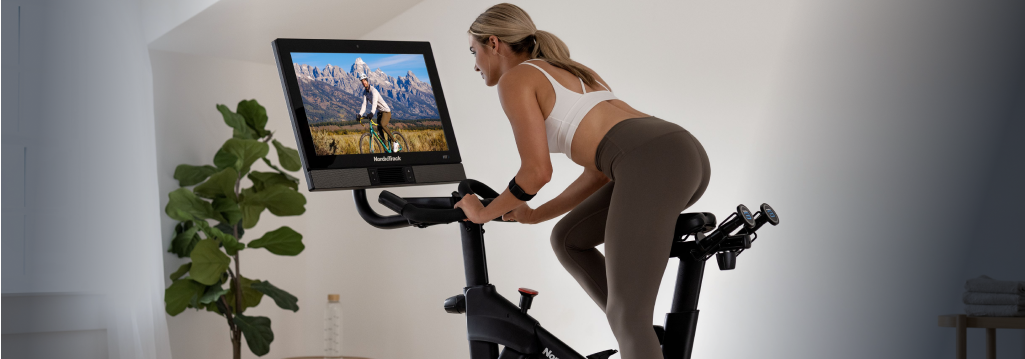
Improving your running performance doesn’t mean you need to spend more time on the road, trail, or the treadmill.
In fact, “doing too much of one type of activity can strain your muscles and lead to an overuse injury,” according to the Mayo Clinic Health System. [1]
A better approach to training is to use your muscles differently, including riding a bike or stationary bike, which may help you run faster, as you’ll see in this article.
That’s why we’re discussing how biking can make you run faster, the research behind this, and how to effectively weave bike riding into your running routine.
If you’re short on time, here are the key takeaways from this article:
- According to research, biking may help improve your running performance, but more studies are needed to confirm these findings.
- There are also three great ways to add biking into your training program that may help improve performance, which you’ll also learn about in this article.
And, if you’re looking to skip ahead, feel free to use this table of contents to do so:
- How Biking Can Make You Run Faster, According to Research
- 3 Ways to Weave Biking Into Your Running Training Program
Here’s How Biking Can Make You Run Faster, According to Research
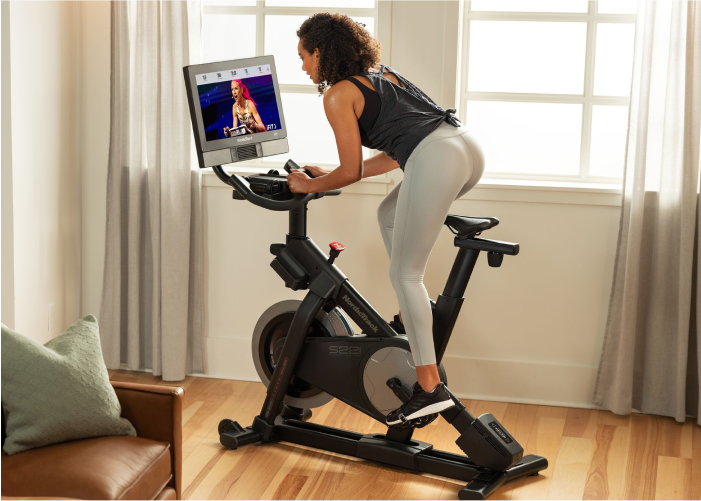
To answer the questions, can biking help you run faster?, or, does riding a bike help you run faster?, it pays to look at the research we have so far.
In this first study, published in Sports in 2019, researchers explored the effects cycling had on running performance, stride length, and oxygen saturation in 12 triathletes.
They found that cycling showed a positive effect on running performance. [2]
Study participants ran faster after cycling than they did after a rest day, and they increased both their stride length and oxygen saturation. [2]
With such positive results, the researchers suggested that cycling could be an effective way to improve running performance and that it’s a good idea to weave cycling into a running training program. [2]
It’s important to note, and you may have noticed this, that the study sample size was only 12 triathletes. So, while it is great to see, we cannot draw firm conclusions, and more research is needed, which leads to this next study, published in 2016 by Sports Medicine. [3]
This time, researchers explored how performing different work-to-rest intervals on a bike could impact running performance.
Twelve male cyclists were divided into three groups, and each group engaged in a different type of high-intensity cycle training.
The first group cycled in 30 seconds of work intervals with 30 seconds of rest.
The second group engaged in 1-minute work intervals with 1-minute of rest.
The third group used 2-minute work intervals and 2-minute rest intervals.
Each cyclist performed their particular training three times per week for six weeks.
Researchers measured the cyclists’ running performance by gauging VO2 max, their 5k run time, and their run economy; the latter is essentially how efficient or inefficient you spend your energy to run a certain distance or speed.
They found that all three groups showed positive improvements in their running performance. However, the first group, those who performed 30 seconds of work and 30 seconds of rest intervals, showed the most significant improvement in VO2 max and run economy. [3]
Does that mean you should stick to this exact run-to-rest ratio?
Not exactly.
The researchers noted that it’s important to find the right work-to-rest ratio for your current fitness level, which may differ from what this study found.
Similar to the first study, with only 12 male study participants, firm conclusions can’t be drawn. However, the study may show that experimenting with interval training might prove beneficial.
Now that you know the research behind using biking to run faster and how that’s possible, here are:
3 Ways to Weave Biking Into Your Running Training Program
If you’re now wondering how to use your bike to become a better runner, these two strategies can help:
1. Consider Interval Training on Your Bike
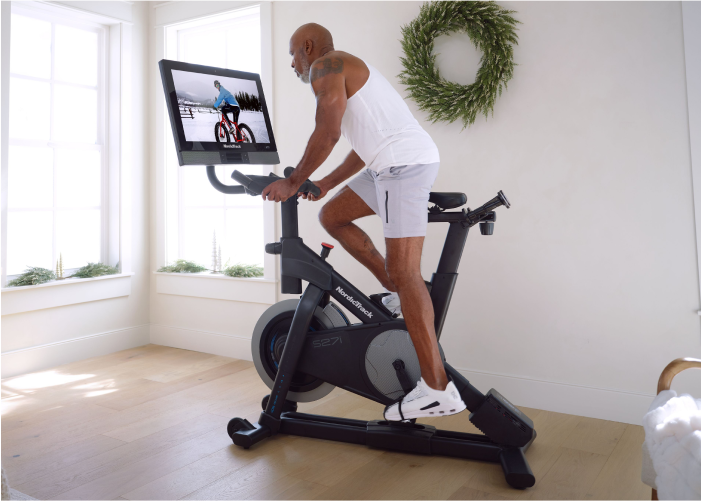
As we saw a moment ago, interval training on your bike may help you improve your speed and endurance, making it a great exercise to try between your run days. [3]
If you’re new to this training style, start slow with equal and small work-to-rest ratios and gradually improve over time.
2. Weave in Longer Bike Rides Throughout Your Week
And, if HIIT training is not your speed, or if you want to mix things up further, you can weave in some longer bike rides throughout your running training program.
These endurance-style bike sessions may help you strengthen your muscles, take a much-needed break from running, and find more enjoyment in your training.
3. Try Brick Workouts
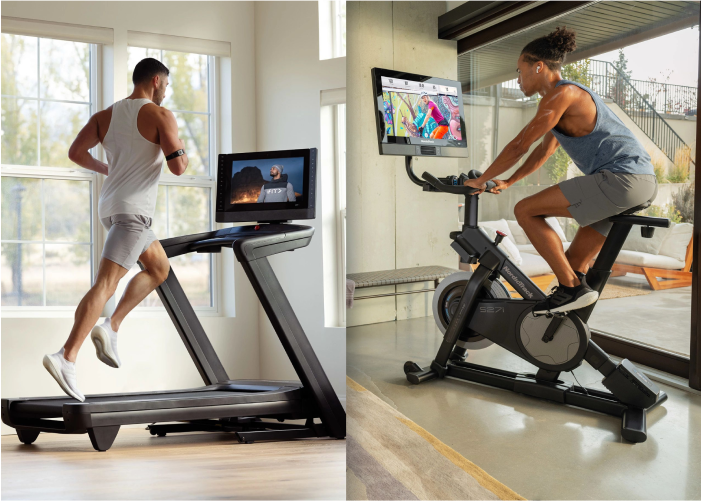
Another style of training, known as brick workouts, is where you combine two forms of exercise, such as running and biking, in one workout.
Imagine it like running a much shorter duathlon.
You could ride your bike for 30 minutes and hop off for a 30-minute run or vice versa.
Then, between these workouts and your longer run days, you can mix in some strength training, Pilates, yoga, or other low-impact exercises.
The key with brick workouts is to start slowly and gradually work your way up.
For example, if you’re new to brick workouts, 30 minutes of bike riding and 30 minutes of running may be too much for you.
Instead, start with five to 10 minutes each as you get used to it, and gradually build from there.
The bottom line
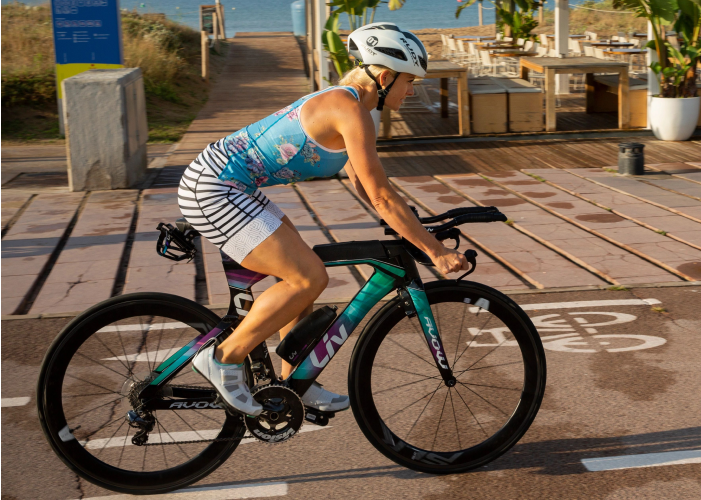
As you just saw, riding a bike may improve your running performance in several ways while helping you potentially reduce the risk of overtraining and overuse injuries from daily runs.
It may also help you enjoy training more as it breaks up your running routine.
So, while you may be a runner at heart, consider giving bike riding a chance, and you may find that you run better and enjoy it more.
References:
- https://www.mayoclinichealthsystem.org/hometown-health/speaking-of-health/what-are-some-signs-of-overtraining
- https://www.ncbi.nlm.nih.gov/pmc/articles/PMC6572577/
- https://www.researchgate.net/publication/273899068_High-Intensity_Cycling_Training_The_Effect_of_Work-to-Rest_Intervals_on_Running_Performance_Measures
- https://pubmed.ncbi.nlm.nih.gov/25164465/
Disclaimer: This blog post is not intended to replace the advice of a medical professional. The above information should not be used to diagnose, treat, or prevent any disease or medical condition. Please consult your doctor before making any changes to your diet, sleep methods, daily activity, or fitness routine. iFIT assumes no responsibility for any personal injury or damage sustained by any recommendations, opinions, or advice given in this article. Always follow the safety precautions included in the owner’s manual of your fitness equipment.


